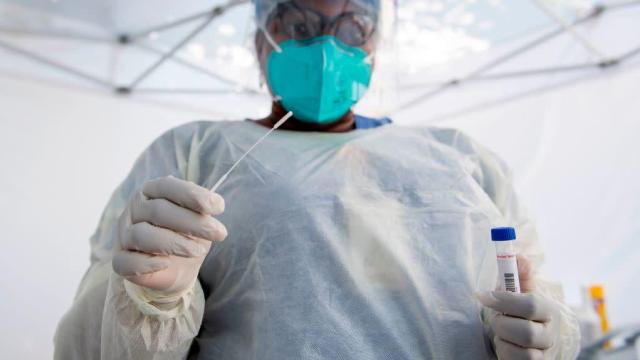Fresh Australian research suggests that the effective life of the Coronavirus on surfaces could be far longer than first anticipated, with lab samples maintaining viability for up to 28 days. Or in other words, yikes. Although there are some silver linings in the research too.
As the ABC reports, research published in Virology Journal undertaken by the CSIRO suggests the COVID-19 Coronavirus might be able to survive on surfaces such as mobile phones far longer than previously expected.
As the entire world struggles to sort out the reality of living with and hopefully surviving COVID-19, the questions around how it can propagate and what best practice is in terms of disinfection really are vital. A group of CSIRO scientists set out to assess the environmental stability of COVID-19 in order to work the risks of fomite transmission from contaminated surfaces.
Or in simpler terms, how long the SARS CoV 2 might survive on surfaces you probably touch every single day. According to the published paper, Australian polymer bank notes, de-monetised paper bank notes and common surfaces including brushed stainless steel, glass, vinyl and cotton cloth were used as substrates that were then exposed to SARS-CoV-2 isolate.
It had previously been thought that the virus would only survive for a few days on most surfaces while still active, but the group’s research suggests that it’s feasible that it could survive, and therefore form an infection risk for much longer than that, especially on non-porous surfaces – like, for example, the glass surface of every mobile phone and tablet that you probably touch thousands of times a week. What that suggests is that COVID-19 could indeed live on your phone for quite some time.
“At 20 °C infectious SARS-CoV-2 virus was still detectable after 28 days post inoculation, for all non-porous surfaces tested (glass, polymer note, stainless steel, vinyl and paper notes),” the paper reads.
So we’re all Golgafrinchans, then?
If you’re not familiar with that reference, in The Hitchhiker’s Guide to the Galaxy, Douglas Adams writes of the Golgafrinchans. They are a race that got rid of the “useless” parts of their society by putting them onto a space ark designed to crash into prehistoric Earth… only to be wiped out by by a raging disease contracted from a dirty telephone.
Adams wrote it as a simple gag in a book full of them, but it’s not feeling quite so funny now if COVID-19 on our phones could indeed wipe us out.
Admittedly, Adams’ work puts the actual telephone sanitation engineers as our direct ancestors, but it’s still a somewhat alarming scenario that feels all the more likely given this quite valuable research. Although there are some happy takeaways from the research as well.
The research notes that survivability at 30 °C drops to 7 days, and at 40 °C that drops to just 48 hours. That’s good news for Australia heading into summer, although conversely worse for the northern hemisphere where colder winter days are fast approaching.
Blinded by the light
The other factor to take into consideration is the lab conditions where the experiments took place. The report notes that the samples used were incubated in the dark. That’s not because COVID-19 is shy – far from it – but to limit any effect that light, and especially UV light might have had on those decay rates.
Scientifically that’s very sound practice, because good science relies on eliminating variables that could affect the outcome of an experiment in any way.
However, it’s now clear that exposure to light, and specifically UV light at the right wavelengths can seriously affect the viability of coronaviruses.
That raises the prospect that while the virus may be able to survive for 28 days in dark environments, actual sunlight could significantly drop that rate, both due to the heat and UV factors inherent within it. Your phone might be slightly more safe from COVID-19 as a result.
Of course, you could also opt for a UV cleaning gadget, although there you do have to be careful to ensure that you’re buying a device that’s both going to be effective as a cleanser and safe for human use.
If you never share your phone that’s probably fine. If you work with phones that are regularly handled by plenty of people – like say, if you work in a mobile phone store, or like me, review smartphones for a living, it’s a great deal more alarming.
Personally, I’ve been dropping all my review phones into a UV steriliser before doing anything with them all year long, and I’m not likely to stop soon. But if you don’t want to invest that way, we’ve also got a guide to safely cleaning your phone here.
Still, that’s a small proportion of the overall Australian population, but it’s it’s also a good reminder that other surfaces, like touchscreens on public ATMs or lift buttons could be riskier than first imagined. Remember to clean your hands regularly and wear your mask, people!
